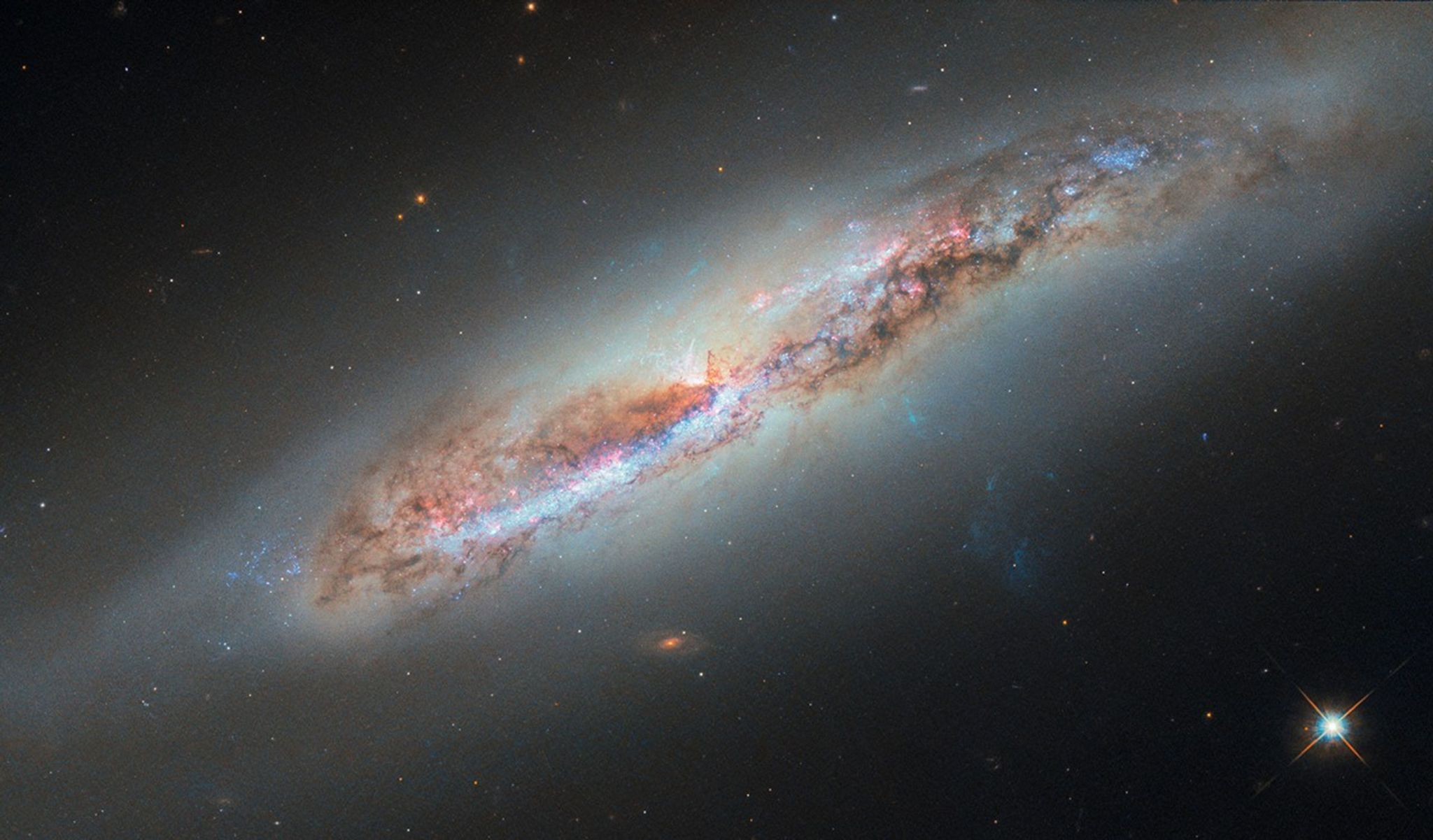Astronomers mine data from the Planck and Herschel missions to find a treasure chest of galaxy clusters.
from News and Features - NASA's Jet Propulsion Laboratory http://ift.tt/19y9Qlr
via IFTTT
Astronomers mine data from the Planck and Herschel missions to find a treasure chest of galaxy clusters.
A dual view of Saturn's icy moon Rhea marks the return of NASA's Cassini spacecraft to the realm of the planet's icy satellites.
The rotating "golden lasso" reflector antenna on NASA's new soil moisture mapping mission is now fully spun up to its design rate in preparation for science operations.
The team operating the Mars Rover Opportunity learned that it experienced a brief amnesia event related to its flash memory, the first since a reformatting a week earlier.
A series of observations from Mars orbit show how dark blast zones that were created during the August 2012 landing of NASA's Curiosity rover have faded inconsistently.
Millions of images of celestial objects, including asteroids, observed by NASA's NEOWISE spacecraft now are available online to the public.
Tune in to a live, interactive broadcast from JPL where a test vehicle for NASA's Low-Density Supersonic Decelerator project is being prepped for its next test flight in June.
NASA Wednesday announced more details in its plan for its Asteroid Redirect Mission (ARM), which in the mid-2020s will test a number of new capabilities needed for future human expeditions to deep space, including to Mars.
A new report identifies top-of-the-line tools for studying the fabric of space.
NASA's new soil moisture mapping mission has moved a step closer to starting science operations following the partial spin-up of its "golden lasso" reflector antenna.
NASA's Mars Exploration Rover Opportunity completed its first Mars marathon Tuesday -- 26.219 miles (42.195 kilometers) - with a finish time of roughly 11 years and two months.
A team using the Sample Analysis at Mars (SAM) instrument suite aboard NASA's Curiosity rover has made the first detection of nitrogen on the surface of Mars from release during heating of Martian sediments.
Operators of NASA's Opportunity Mars rover have reformatted the rover's onboard flash memory so the team can resume storing data overnight on the rover.
The team in charge of NASA's Kepler mission will receive the Smithsonian National Air and Space Museum's highest group honor at a ceremony in Washington on March 25.
A sudden eruption around an exceptionally young star surprises astronomers.
Satellite observations provide a new and more accurate way to assess where underground water in northern Italy is most at risk from pollutants.
The ADAPT test system can help a spacecraft divert its course and make a smooth, pinpoint landing. Two technology demonstration test flights were completed in California in 2014.
Researchers have discovered two seafloor troughs that could allow warm ocean water to reach the base of Totten Glacier, East Antarctica's largest and most rapidly thinning glacier.
Those who feel as though they've been living in the never-ending winter of the movie "Frozen" this year, this could be welcome news.
NASA's Curiosity Mars rover used its robotic arm Wednesday, March 11, to sieve and deliver a rock-powder sample to an onboard instrument.
The world celebrates the number pi on Pi Day: March 14, 2015 (3/14/15). Here's how pi is used in science and engineering.
The hidden ocean of Saturn's moon Enceladus could be home to present-day hydrothermal activity, according to two new studies by scientists with NASA's Cassini mission.
NASA's Dawn spacecraft has become the first mission to achieve orbit around a dwarf plan-et.
NASA's Mars Exploration Rover Opportunity is investigating unusual rocks before reformatting the rover's memory and continued driving toward "Marathon Valley."
NASA's next mission to Mars, InSight, is on track to launch a year from today and to study the Red Planet's interior to learn about how rocky planets like Earth evolved.
Astronomers have discovered the second known case of a planet in a quadruple star system.
NASA's Dawn spacecraft has returned new images captured on approach to its historic orbit insertion at the dwarf planet Ceres, scheduled for Friday, March 6.
This NASA/ESA Hubble Space Telescope image features the galaxy NGC 4388, a member of the Virgo galaxy cluster. ESA/Hubble & NASA, ...
